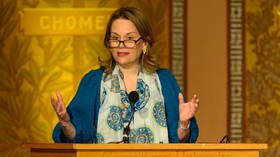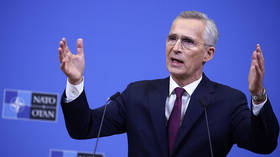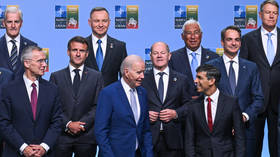37% of NATO members don’t pay their way – Washington

Twelve NATO countries are yet to meet the pledge to spend 2% of their GDP on defense, the American ambassador to the alliance, Julianne Smith, said on Monday.
The US-led bloc set the two-percent goal in 2014, after the Western-backed coup in Kiev touched off the Donbass conflict. All members were supposed to make the “burden-sharing” benchmark within a decade.
“Right now we have 20 allies that are meeting the 2% pledge – 20 allies,” Smith said in a speech at Georgetown University in Washington, DC. “That is a significant increase over a decade. Of course we want it to be all 32 and we’re going to keep pushing until we get there.”
Smith was the keynote speaker at the ‘NATO at 75: Charting a New Course?’ conference, organized by Georgetown’s Center for Security Studies. The event also featured an appearance by Supreme Allied Commander Europe (SACEUR) General Christopher Cavoli.
It was unclear which data Smith was relying on to make her claim. As of February this year, estimates of 2023 military spending still showed that only 11 member states had met the 2% goal while 18 were still falling short – including France, the Netherlands, Norway, Denmark, Italy, Canada, Türkiye and Spain. Iceland does not have an actual military while Finland and Sweden – which joined last April and last month, respectively – were not included in the estimates.
Poland last year spent 3.9% of its gross domestic product on the military, the highest of all bloc members. Polish President Andrzej Duda recently proposed raising the minimum spending threshold to 3%, arguing that 2% was “no longer enough.”
The US came in second at 3.49% of its GDP. However, in terms of raw numbers its military budget was more than double of all other bloc members combined, at $860 billion.
Speaking on the campaign trail last month, former US President Donald Trump suggested that Washington should only live up to its treaty commitments to NATO members that “play fair” and recalled telling one bloc member that he would encourage Russia to “do whatever the hell they want” to countries that were “delinquent.”
In her speech at Georgetown, Smith argued that NATO has been successful at “burden-sharing” in the case of Ukraine. While the US has provided around $75 billion in military aid to Kiev, the European members of the bloc contributed around $110 billion, she noted.
The US envoy also argued that the past two years have been “transformative,” noting NATO’s reorientation from expeditionary wars to opposing Russia in Europe. At the same time, she pointed out that the bloc has updated its security strategy to view China as a potential threat and reach out to “partners in the Indo-Pacific” to counter it.














